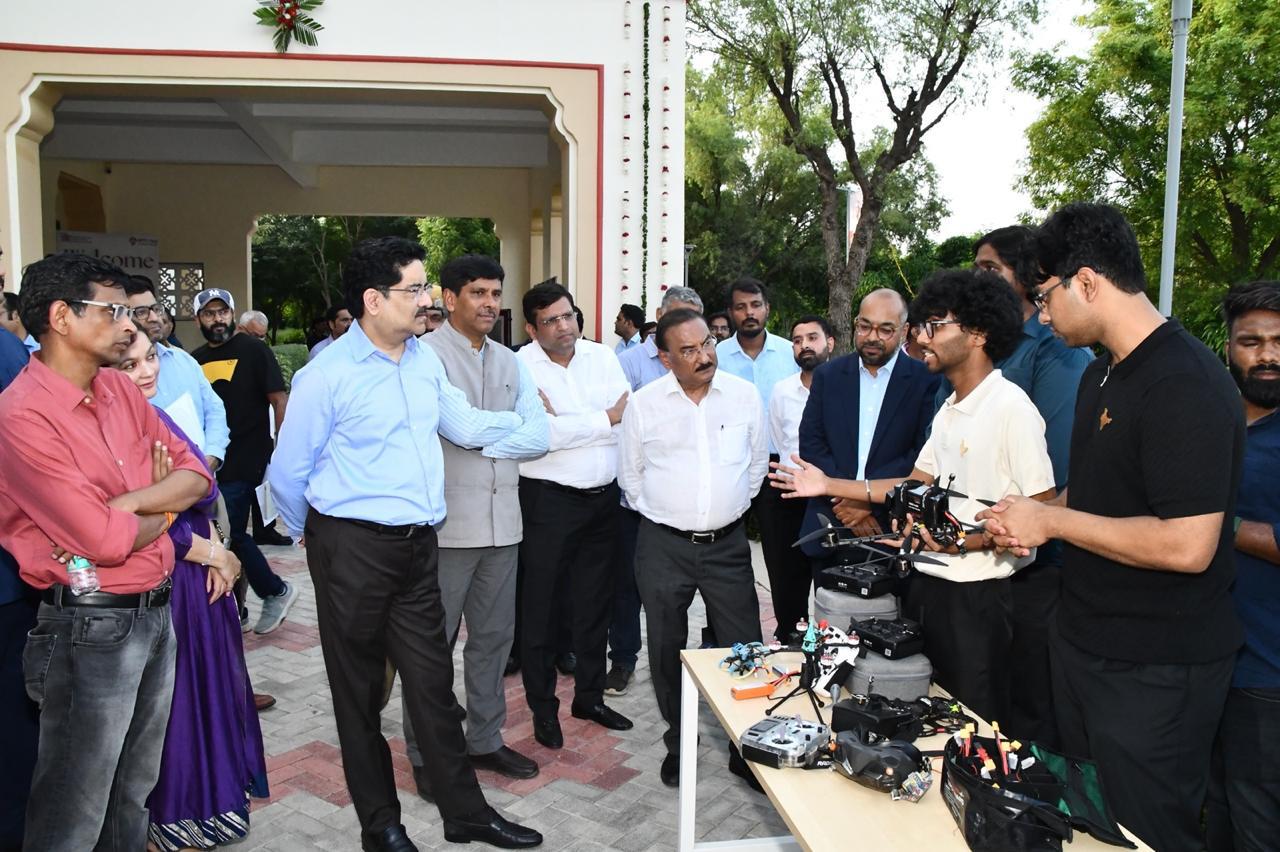
Tech Tales - July'25
Student Engineers Build 300 km/h Kamikaze Drones for the Indian Army
In a story that's nothing short of cinematic, two 20-year-old engineering students from BITS Pilani–Hyderabad — Jayant Khatri and Sourya Choudhury — turned their dream into reality in the most jaw-dropping way. It's a story that blends youthful ambition, cutting-edge technology, and patriotism. Using just LinkedIn posts and cold emails, they caught the attention of the Indian Army and delivered real, radar-resistant kamikaze drones capable of zooming at 300 km/h while carrying a 1 kg payload. Installed and deployed across challenging terrains—from Jammu to Arunachal Pradesh—these drones are actively enhancing India’s indigenous defense capabilities. Their startup, Apollyon Dynamics, is also tackling VTOL and fixed-wing designs next. It’s not just an engineering win—it’s a mission accomplished.
The Beginning – An Idea Born Out of Determination
It all started in the classrooms and labs of a small engineering college in India.
While most of their peers were busy preparing for placements or pursuing higher studies, this team of passionate students had a different dream — to use their technical skills to directly serve the nation.
They closely followed news of global conflicts and modern warfare, noticing how drones were playing a crucial role in reconnaissance and combat missions.
Their thought was simple yet bold:
"Why should India rely on foreign technology when we, as students, can build something ourselves?"
The Project – From Blueprint to Battlefield
They began with sketches and CAD models, researching aerodynamics, battery efficiency, and payload systems.
Funding was scarce — but passion was abundant. Using 3D printers, salvaged motors, and open-source flight control software, they built their first prototype.
However, the real breakthrough came when they designed:
- A lightweight carbon-fiber body to ensure speed and maneuverability.
- A powerful propulsion system capable of hitting 300 km/h.
- Precision targeting software with GPS guidance.
- Detachable warheads for kamikaze-style impact missions.
- These features turned a classroom experiment into a potential game-changer for defense operations.
The Challenges – Sweat, Setbacks & Sleepless Nights
The road wasn’t smooth.
-
Their first test flight crashed due to GPS signal issues.
-
A battery malfunction caused another prototype to catch fire.
-
Some even doubted whether students could produce defense-grade tech.
But the team never gave up.
They improved designs, re-coded software, and worked late nights fueled by instant noodles and nationalistic passion.
Recognition – From Campus to Command
Their persistence caught the attention of defense officials during a tech exhibition.
After rigorous field trials, the drones impressed with:
- High speed and agility for quick strikes.
- Ability to operate in varied terrains.
- Cost-effectiveness compared to foreign models.
The Indian Army officially expressed interest, marking the beginning of their journey from students to defense innovators.
Why This Story Matters
This is more than just a tech achievement — it’s proof that:
- Innovation isn’t limited to big labs or multinational corporations.
- Patriotism can be expressed through technology.
- Indian youth can build world-class solutions when given the chance.
Their journey reminds us that in the age of drones and AI, serving the nation isn’t limited to wearing a uniform — sometimes it’s about building the tools that protect those who do.
Lessons We Can Learn
-
You don’t need a fancy background — even students can lead real change.
-
Reach out boldly — a post or a message can spark opportunities.
-
Tech can be a national service — your coding, designing, or tinkering can one day protect India.
-
Start small, think big — from LinkedIn to the army's rooftops, the journey begins with courage.
💡 Final Words
The journey of these student engineers is a reminder that technology is most powerful when it serves humanity. They’ve proven that youth, when empowered with the right vision, can transform national security.
Who knows? The next big breakthrough in defense tech might just be brewing in a college lab somewhere in India.
Happy Coding!!
4 Reactions
0 Bookmarks

